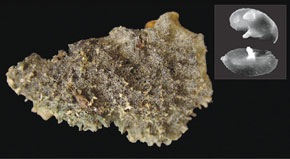
VOLKMER-RIBEIRO ET AL. ACTA LIMNOLOGICA BRASILIENSIA, 2008 Drulia ctenosclera and microscopic spicules: the cause of eye problems in AraguatinsVOLKMER-RIBEIRO ET AL. ACTA LIMNOLOGICA BRASILIENSIA, 2008
Along some stretches of the Araguaia River – and possibly of other rivers in the Amazon – swimming without protective eye gear or opening your eyes underwater is not advisable. Rigid microscopic particles (spicules) from the skeletons of sponges may penetrate the membranes covering the eyes and cause serious problems, like those observed in the municipality of Araguatins by researchers from Ribeirão Preto, São Paulo, and Porto Alegre. Around 2005, an outbreak of eye problems affected some 100 children and teens, all of whom had swum in the Araguaia alongside this resort town in far northern Tocantins, nestled on the banks of the river. After going for a dip, the children complained of sensitivity to light, redness, itchiness, and pain and burning in their eyes. In many cases, superficial scratches or lesions turned into small nodules or opaque spots on the outermost membranes, as a result of fungal or bacterial infections (Eye, January 2013). Two children lost sight in one of their eyes. Expedito Luna, a physician with the University of São Paulo’s Tropical Medicine Institute and then head of the Ministry of Health’s agency for communicable disease surveillance, assembled a multidisciplinary team to investigate the cause of the outbreak. After working for a year, biologists Cecília Volkmer-Ribeiro and Twiggy Batista, along with the physician Henrique Lenzi, showed that the cause of the problem was not parasites in the water but the spicules of the freshwater sponges Drulia uruguayensis and Drulia ctenosclera. Luna suspects that what they saw in Araguatins may also occur in other areas, as settlement of the Amazon advances.
Republish